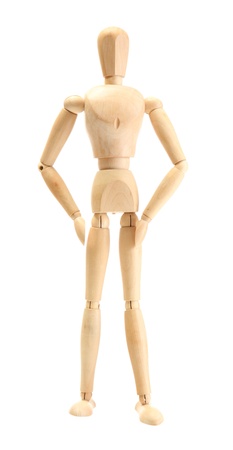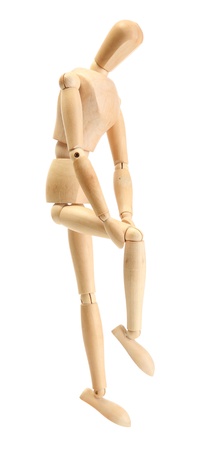Presence – a book summary
Too often we approach life’s biggest challenges with dread. Filled with anxiety and the imposter syndrome how can we perform at our best? Amy Cuddy offers an accessible alternative in her book Presence.
I recently listened to a seminar which touched on the concept that the mind often takes its queues from the body. In a potentially cringe-worthy spot of audience participation, we were asked a few simple questions on our mood. We were then asked to stand in the wonder woman pose (legs hip-width apart, hands on hips) for 30 seconds and repeat the mood scoring.

The concept of the mind follows the body is not new to me: I have heard it countless times on the Art of Charm podcast and probably other places too. That said, there is something striking about investing just 30 seconds in a simple exercise and seeing immediate results. I wish my gym workouts had the same instant transformational power.
Before moving on the speaker referenced Presence by Amy Cuddy and her Ted Talk (which is a top 10 TED talk of all time). With the power of audible, I was listening to the book later that day and Amazon delivered the hard back the next day. This is part of my dual format reading strategy for business books. The 30 pages of references made the book a worthwhile investment. The book is easy going read (listen) but the hard science is just a footnote away.
“Preparation is obviously important, but at some point, you must stop preparing content and start preparing mindset. You have to shift from what you’ll say to how you’ll say it.”
What is Presence?
Presence is the state of being attuned to and able to comfortably express our true thoughts, feelings, values and potential. It’s not a permanent, transcendent mode of being. It comes and goes. It is a moment to moment phenomenon.
Presence is a quality that helps us:
- Command respect and inspire others
- Speak with poise and clarity
- Become genuinely like able to others
- Develop an inner sense of confidence that helps us feel good about ourselves and make progress in our lives
Believing and Owning Your Story
Chapter 2 delves into self-affirmation. I was concerned this would be a load of nonsense. Amy references Professor Claude Steele from Stanford University and his self-affirmation theory. This asserts that by reflecting on what matters to us most we can ground ourselves in our own story. This makes us less dependent on the approval of others. He conducted an experiment called Trier Social Stress Test (TSST) to determine how people respond to social anxiety. The TSST causes a measurable cortisol spike which indicates stress. Those reflecting on their authentic best selves had lower cortisol increases suggesting the affirmations protected them from anxiety.
Stop Preaching Start Listening: How Presence Begets Presence
Listening without judging can turn us into powerful leaders. Reverand Jeffrey Brown was a young Baptist minister in a community in crisis. Gang violence and killing was spiralling out of control. Rather than sit in church groups and admire the problem he got out in the community. He grasped that first it is important to be available, liked and trusted.
In Amy’s research, she has discovered that we prioritise warmth over competence. “When we meet someone new, we quickly answer two questions: “Can I trust this person?” and “Can I respect this person?”
Usually, we think that a person we’ve just met is either more warm than competent or more competent than warm, but not both in equal measure. Tiziana Casciaro, in her research into organisations, refers to these types as lovable fools or competent jerks.
Occasionally we see people as incompetent and cold—foolish jerks—or as warm and competent—lovable stars. The latter is the golden quadrant because receiving trust and respect from other people allows you to interact well and get things done.
But we don’t value the two traits equally. First we judge warmth or trustworthiness, which we consider to be the more important of the two dimensions. Why do we prioritize warmth over competence? From an evolutionary perspective, it is more crucial to our survival to know whether a person deserves our trust. If he doesn’t, we’d better keep our distance, because he’s potentially dangerous, especially if he’s competent. We do value people who are capable, especially in circumstances where that trait is necessary, but we only notice that after we’ve judged their trustworthiness.
Being present and warm opens the door so that other can later see that you are trustworthy.
I Don’t Deserve to Be Here
The feeling that we don’t belong is not uncommon. Particularly if you have a hidden difference like dyslexia. I’ve blogged before on imposter syndrome. Amy points to research that shows imposter syndrome afflicts man and women equally, across dozens of demographic groupings spanning the age ranges.
Powerlessness shackles the self. Our feeling of power and control impact how we judge the environment around us. When we feel powerful and safe we are attuned to opportunities. We are positive and optimistic and this reaps rewards. When we feel powerlessness opportunities take on the aspects of threats. This further reinforces a feeling of powerlessness creating a trapping cycle.
This power is not a power over other people (which Amy calls social power). It is a personal power – a state of being in control of our most precious inner resources.
In the book, Amy explains how you can using priming to enter a state of personal powerfulness. This allows you to tap into the benefits of that physiological state. Like the power pose, it is a simple exercise that can yield big results.
Slouching Steepling and the Language of the Body
If power poses bring benefits is there a pose that has negative consequences? Yes. Poses that cause our body to be in a confined position. For example using a smart phone.

Throughout the day, we should avoid hunching over our phones as this posture makes us feel less confident. To go one step further it is a good idea, to bring power posing into daily routines, such as brushing your teeth
“Movement, like posture, tells the brain how it feels and even manages what it remembers. As walking becomes more open, upright, and buoyant, our memories about ourselves follow suit.”
Surfing Smiling and Singing Ourselves to Happiness
Amy explains the research that demonstrates that facial gestures can impact our mood. Smiling actually makes you happy (and no that is not licence to tell a person struggling with depression to just smile more). Clenching jaws literally makes you angry. This is the facial feedback hypothesis (now you can see why I was chuffed to have the hard copy book so I can dig into the references).
The mind body connection is not limited to facial expressions. There is a mountain of research that demonstrates yoga yields positive psychological and physiological benefits. It’s no wonder I find yoga helps me sleep better.
The Body Shapes the Mind
This chapter dives a little deeper into some of the posture research. The bit I found particularly interesting was about pain. Adopting expansive body posture toughens you to physical pain. This is of major significance. Consider the powerlessness someone with chronic pain might feel and the downward spiral discussed above. Could that spiral of doom be interrupted by something as simple as changing posture?
How to Pose for Presence
Amy gives a load of advice on how to put the earlier parts of the book into practice. Some of this is about using the power posture techniques. Some of it also covers the reverse – spotting when the posture slumps and using this as a queue to investigate what’s happening.
There seems to be what researchers refer to as a “bi-directional” relationship between feeling and behaviour. When you feel powerful, you expand your body, and when you expand your body, you feel powerful. Expanding your body language can alter your mental state and make you feel more powerful.
Amy’s research showed that simply standing like Superman or Wonder Woman (hands on your hips, shoulders back) for as little as 2 minutes raises testosterone (the hormone associated with confidence) by 19% and decreased cortisol (the stress hormone) by 25%. A two-minute hack to be more confident and less stressed and better still it is an effect noticeable by others too. People who adopted these proses before interviews were ranked higher by those observing them.
“Expanding your body language—through posture, movement, and speech—makes you feel more confident and powerful, less anxious and self-absorbed, and generally more positive.”
Self-Nudging: How Tiny Tweaks Lead to Big Changes
Amy urges us to heed the advice of Daniel Kahneman to make nano sizes investments that lead to medium sized gains.
This is the incremental approach to self-improvement. It contrasts with the big bang new years resolution approach in method and results – so give it a try.
Fake It Till You Become It
This chapter is mostly a collection of stories from listeners to her TED talk that have put into practice the techniques in the book for great results.



Pingback: Mindfulness for those that can’t meditate – Differently Wired